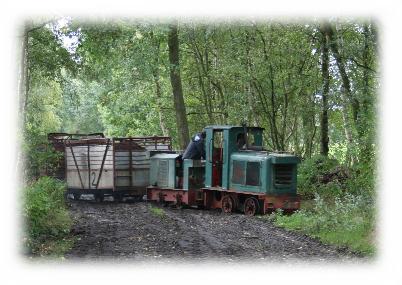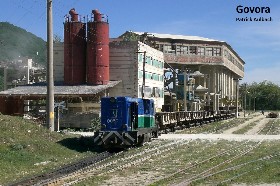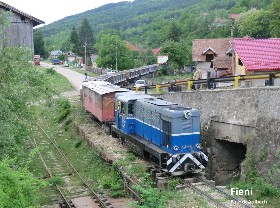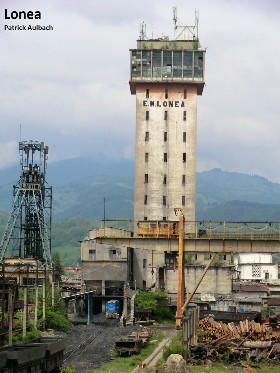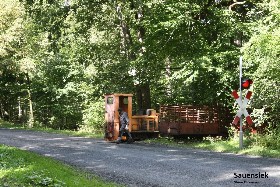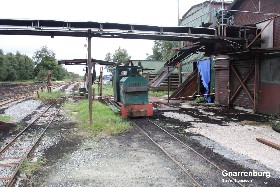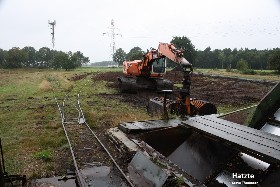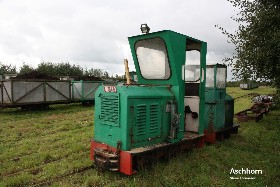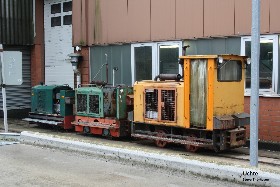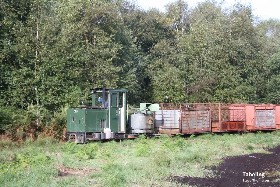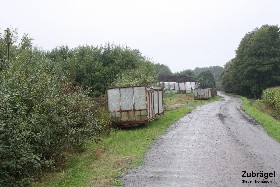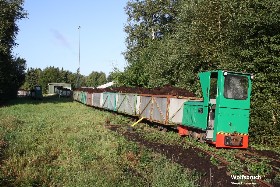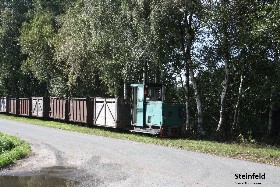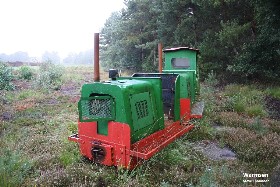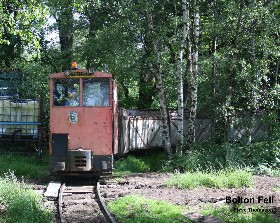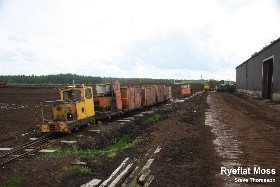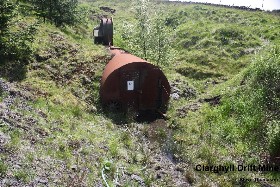ENGLAND: August 2013
Hopewell Colliery, Forest of Dean
(2ft gauge) Steve and Richard Harding from the Haywood Mine were working here 2 mornings a week to give Robin a hand and tubs were being hauled out every 20 minutes until approx 12:00. The coal is tipped into a waiting lorry which takes the coal to a grader at the other side of the site.
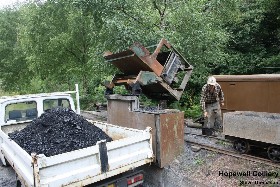
(Above) After tipping the coal into the waiting lorry, the axles of a tub are greased before being lowered on the tippler. Taken on the 13th August 2013.
Phoenix Mine, Forest of Dean
(2ft gauge) No coal has been brought up here for a number of years. Nothing has changed significantly here for a long time. The yard is used for occasional maintenance in connection with operations at Hopewell. An extension to the storage yard had been constructed in the last 12 months and the waste line had been extended by a couple of track panels. The wagon tippler is now in use at Hopewell and no wagons were present outside the adit.
|
Monument Mine, Forest of Dean
(1ft 7½ ins Gauge) Up to 4 miners are still working here, with 2 on site at the time of the visit. One rake of 3 tubs was brought up around late morning. Little has changed over recent years, but the waste line has been shortened recently and there are plans to install a rotary tippler here to save hand-tramming waste to the end of the line. The miners appear to have a very healthy demand for the coal with a traditional brickworks taking lump coal all year round, and a number of locals arriving to purchase coal for domestic use.
Cannop Drift Mine, Forest of Dean
(2ft gauge assumed) After being abandoned by the Harding brothers approx 3-4 years ago, the mine is back in operation being managed by a father and son on a part time basis. Many new pit props were next to the adit ready to go underground and a plentiful stock of coal was in evidence on the surface. There were 2 wagons on site with a single wagon in use for coal haulage.
Ladyslade (AKA Buckle) Mine, Forest of Dean
(2ft gauge assumed) Supplies of coal were still present under the grader, but the mine appeared not to have been in use for a significant period of time. In the last 18 months there had been a hydraulic rotary tippler installed, but it’s not clear how much use this actually had seen.
|
Prospector Mine, Forest of Dean
(Gauge was previously reported as 20 inch) This mine near Plump Hill had reportedly only been started in spring 2011, but has already been abandoned. All track has been removed and the only railway equipment on site is the remains of one rusted wagon chassis. The winding house is still present on top of the unloading platform but the winch has been removed. Looking into the locked adit, it’s unclear how deep it was dug before operations stopped. No coal had been brought up before closure.
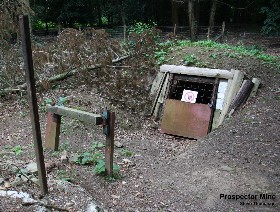
(Above) The adit of Prospector mine now with all rails removed, taken on 14th August 2013.
(Posted 18.08.2013 Source: Steve Thomason)
|
